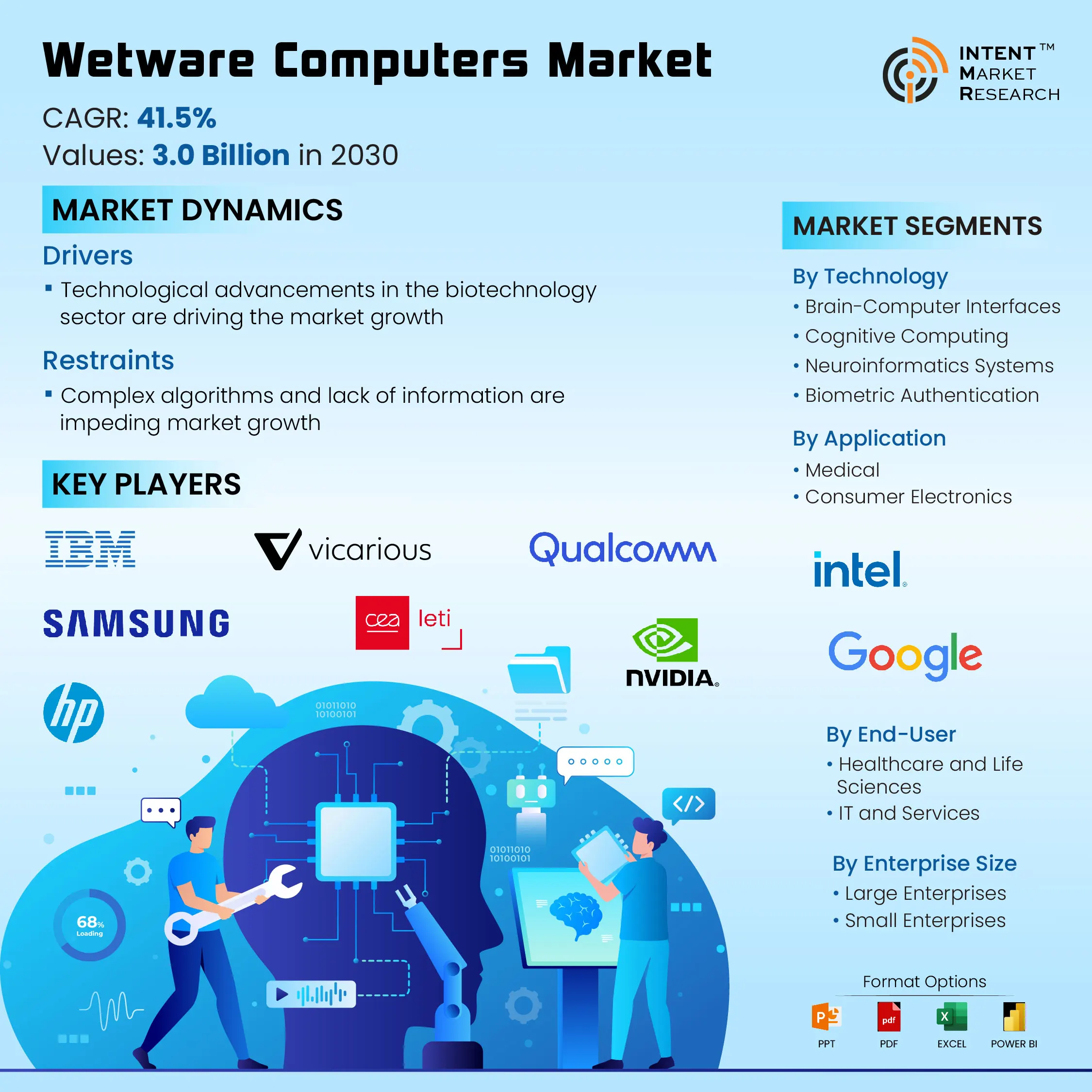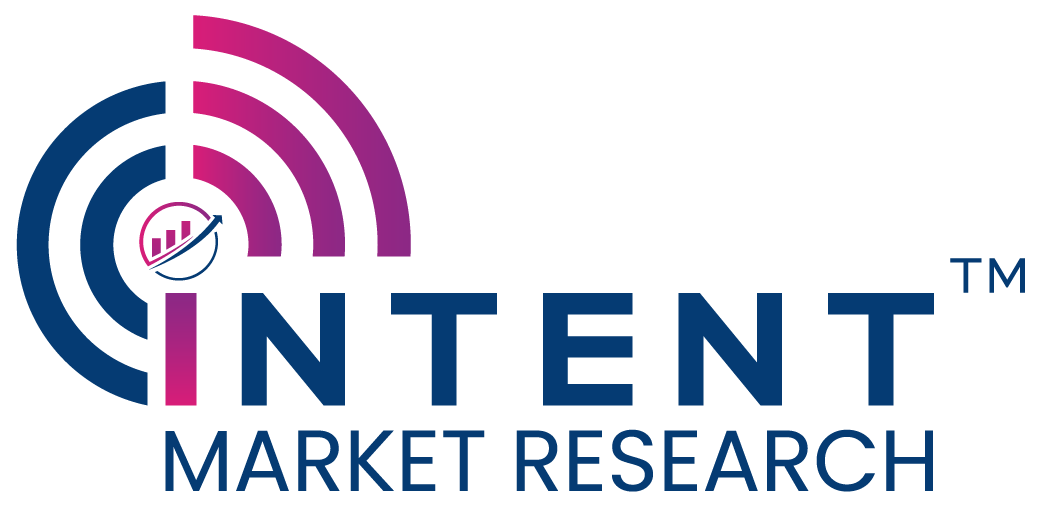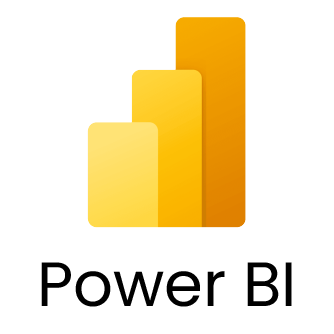Wetware Computers Market
- December, 2023
- Semiconductor & Electronics
Wetware Computers Market Size Analysis By Technology (Brain-Computer Interfaces (BCIs), Cognitive Computing, Neuroinformatics Systems, Biometric Authentication, Virtual Reality (VR) and Augmented Reality (AR)), By Application (Medical, Consumer Electronics, Automotive, and Transportation, Defense and Security), By End-Use Industry (Healthcare and Life Sciences, IT and Services, Academic and Research Institutes), By Enterprise Size (Large Enterprises and Small Enterprises) and By Region; Growth Trends and Forecasts (2024 - 2030)
As per Intent Market Research, the Wetware Computers Market size is expected to grow from USD XX billion in 2023 to USD 3.0 billion by 2030, at a CAGR of 41.5% during the forecast period (2024-2030). The wetware computers market is segmented by technology, application, enterprise size, end-use industry, and region.

A “wetware computer” typically refers to a computational system that utilizes biological components or living organisms to perform computations. The term “wetware” is a play on words, contrasting with “hardware” (physical computer components) and “software” (programs and instructions). Wetware computers can incorporate elements such as biological neural networks, DNA computing, or biochemical reactions for information processing. These systems aim to harness the unique properties of biological systems, such as parallelism and adaptability, for specific computational or problem-solving purposes.
Technological advancements in the biotechnology sector are driving the market growth
Wetware computers are becoming increasingly popular due to advancements in biotechnology such as gene editing, synthetic biology, and bioinformatics. These computers can be used in healthcare for bio-sensing, personalized medicine, and biometric security. Wetware computers process data in parallel and store it on the device, which avoids data shuttling and allows for more efficient computing.
The need for high-performance Integrated Circuits (ICs) is a significant driving force in the wetware computers market. GrAI Matter Labs secured USD 14 million in investment for its GrAI full-stack AI system-on-chip platform, which meets customer demands at the edge. The expanding number of machine-to-machine connections and artificial intelligence penetration are driving the demand for additional edge solutions using wetware computers. Artificial intelligence (AI) is being employed across diverse sectors such as medical, media, entertainment, telecom, utilities, aerospace, military, consumer products, food and drinks.
Complex algorithms and lack of information are impeding market growth
The wetware computers business encounters challenges, including the complexity of developing hardware for neuromorphic chips and a lack of information about wetware computers, both of which are primary issues constraining market growth. Defining the algorithms, that is, the structure and dynamics of the network, is one of the most significant current issues in wetware computers, which is impeding market growth throughout the forecast period.
Mimicking the brain’s efficiency, adaptability, and learning capabilities requires sophisticated algorithms and hardware, which is a highly complex task. Working with living systems in computing raises ethical concerns, including issues of consent, manipulation, and control. Practical challenges also emerge in maintaining and controlling biological components in computing systems. Despite these challenges, the wetware computers market is anticipated to grow due to the development of new AI inference servers and the increasing demand for higher-performance ICs.
Rising demand for Brain-Computer Interfaces (BCIs) technology is thriving the market growth
Brain-computer interfaces (BCIs) play a significant role in neuroscience research by allowing scientists to study brain function and neural pathways. They facilitate the understanding of neurological disorders and brain-related conditions. It is employed as assistive technology, enabling hands-free control of devices, communication aids for individuals with conditions such as ALS, or helping restore lost sensory or motor functions.
In the entertainment industry, BCIs have been explored as a means to enhance gaming experiences by enabling control via brain signals, offering immersive virtual reality experiences, or creating adaptive gaming interfaces. The growing interest in BCIs is a part of the development of “wetware computers,” as these technologies involve the integration of biological components with computational systems.

Increasing demand for wetware computing in consumer electronics is responsible for market growth
Wetware computers have the potential to allow several varieties of sensors and devices to perform intelligently without requiring an internet connection. Various kinds of sensors in pervasive and distributed networks, power consumption, processing speed, and system adaptation are vital in the future of smart wearable devices. For instance, according to Cisco Systems, the number of connected wearable devices reached 1,105 million in 2022 compared to 929 million in the previous year.
The increasing interest in wetware computing shows that hardware-spiking neural networks are considered a critical future technology with high potential in crucial applications, such as edge computing and wearable devices. The growing demand for wetware computers in consumer electronics is propelling the market’s growth.
Wetware computers are deployed in large enterprises for data analysis, and optimizing business processes
Large enterprises use various advanced computing technologies for data analysis, predictive analytics, customer relationship management, and optimizing business processes. Also, large-scale data processing frameworks and technologies are utilized to handle and derive insights from massive data generated within enterprises.
Many enterprises utilize cloud infrastructure and services for scalable and flexible computing power, storage, and applications. Robust cybersecurity systems are implemented to protect enterprise networks, data, and sensitive information from threats and breaches. Internet of Things (IoT) devices and edge computing technologies are employed for real-time data processing and automation in various industries.

Advances in healthcare and life sciences are contributing to the growth of the wetware computers
Healthcare and life sciences sector generates vast amounts of biological data through genomics, proteomics, and other fields. Researchers are using biological principles for data processing and computation, and are exploring ways to mimic natural biological systems such as neurons and DNA for computation. Advances in life sciences, including genetics and biotechnology, are contributing to personalized medicine.
Bioinformatics uses computer tools to analyze biological data (such as DNA sequences) to gain insights into diseases, drug discovery, and understanding of biological systems. Healthcare and computing researchers are drawing inspiration from nature to develop innovative computing solutions. The growth of “wetware computing,” or biologically inspired computing, is influenced by advances in medicine and life sciences, but it is important to note that the field is still in its infancy.

Favorable government initiatives in North America are driving market growth
The market for wetware computers is experiencing growth in the region, driven by government initiatives and investment activities. In September 2022, the Department of Energy (DOE) announced funding of USD 15 million for 22 research projects to advance wetware computing.
Collaborations are forming to advance wetware computing technology through various research projects. For instance, in August 2022, the Pritzker School of Molecular Engineering (PME) at the University of Chicago developed a flexible and stretchable wetware computing chip that mimics the human brain to process information. The device has the potential to revolutionize the processing of health data. Thus, these factors are driving the market’s growth in the region.
Collaborations is the key strategy to advance wetware computing technology through various research projects
The wetware computing market is consolidated, with large-scale semiconductor vendors, start-ups, and universities. Vendors are investing in R&D and collaboration to commercialize the market, making it less competitive. Edge Impulse, launched in August 2022, allows developers to create enterprise-grade machine-learning algorithms. These algorithms can be trained on real-world sensor data in a low-code environment and turned into Spiking Neural Networks (SNN) compatible with BrainChip Akida devices. SynSense announced a collaboration with BMW in April 2022 to integrate wetware chips and smart cockpits. Prominent players include CEA-Leti, General Vision, HP, HRL Laboratories, IBM, Intel, Knowm, Qualcomm Technologies, Samsung, Vicarious FPC, Google, and NVIDIA.
Wetware Computers Market: Scope of the Report
The report provides key insights into the wetware computers market, and it focuses on technological developments, trends, and initiatives taken by the government. In this sector analysis explores market drivers, restraints, opportunities, and other relevant factors. It also examines key players and the competitive landscape within the market for wetware computers.
Wetware Computers Market are segmented By Technology (Brain-Computer Interfaces (BCIs), Cognitive Computing, Neuroinformatics systems, Biometric Authentication, Virtual Reality (VR) and Augmented Reality (AR)), By Application (Medical, Consumer Electronics, Automotive, and Transportation, Defense and Security), By End-Use Industry (Healthcare and Life Sciences, IT and Services, Academic and Research Institutes), By Enterprise Size (Large Enterprises and Small Enterprises) and By Region. The report offers the market size and forecasts for the Wetware Computers market in value (USD billion) for all the above segments.
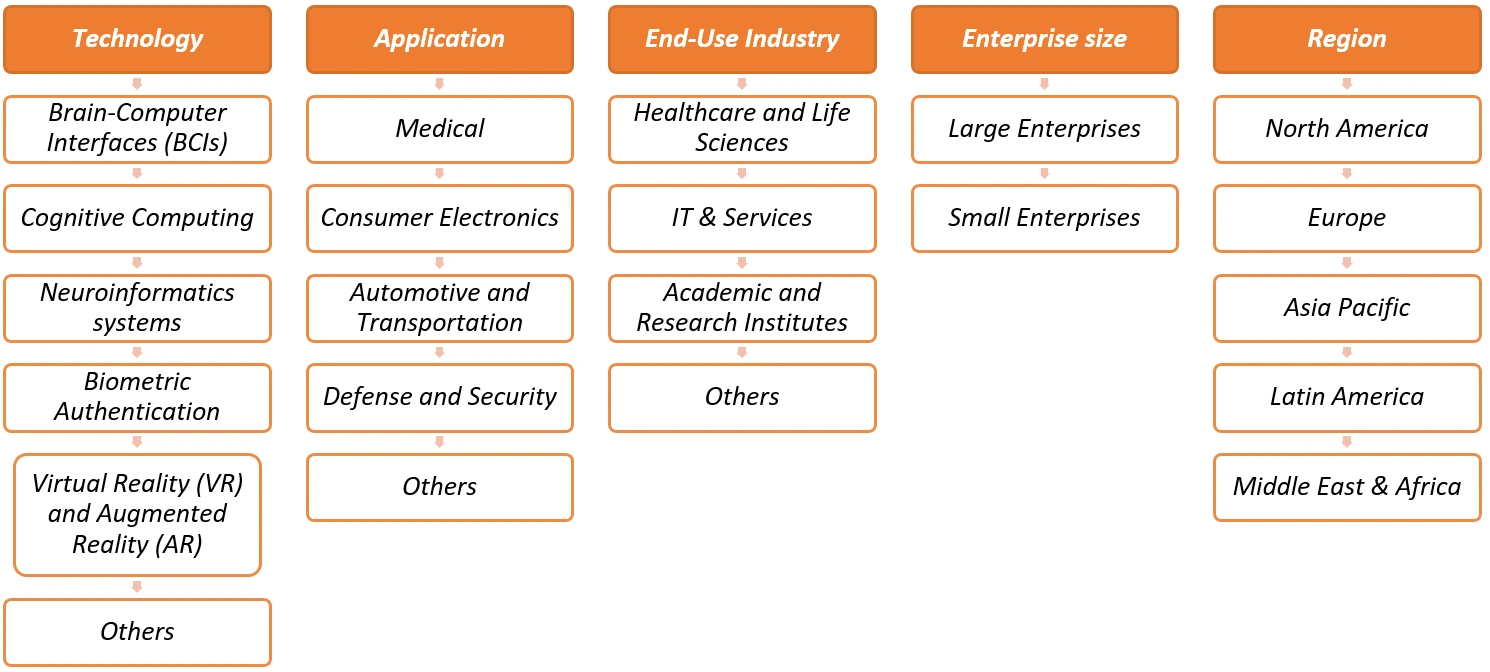
Report Scope:
Report Features | Description |
Market Size (2023-e) | USD XX Billion |
Forecasted Market Size (2030) | USD 3.0 Billion |
CAGR (2024-2030) | 41.5% |
Base Year for Estimation | 2023-e |
Historic Year | 2022 |
Forecast Period | 2024-2030 |
Report Coverage | Market Forecast, Market Dynamics, Competitive Landscape, Recent Developments |
Segments Covered | By Technology (Brain-Computer Interfaces (BCIs), Cognitive Computing, Neuroinformatics systems, Biometric Authentication, Virtual Reality (VR) and Augmented Reality (AR)), By Application (Medical, Consumer Electronics, Automotive and Transportation, Defense and Security, and others), By End-Use Industry (Healthcare and Life Sciences, IT and Services, Academic and Research Institutes), By Enterprise Size (Large Enterprises and Small Enterprises and By Region |
Regional Analysis | North America (US, Canada), Europe (Germany, France, UK, Italy), Asia Pacific (China, Japan, South Korea, India), Latin America (Brazil, Mexico, Argentina), Middle East and Africa (Saudi Arabia, South Africa, United Arab Emirates) |
Competitive Landscape | CEA-Leti, General Vision, HP, HRL Laboratories, IBM, Intel, Knowm, Qualcomm Technologies, Samsung, Vicarious FPC, Google, and NVIDIA |
Customization Scope | Customization for segments, region/country-level will be provided. Moreover, additional customization can be done based on the requirements. |
Purchase Options | We have three licenses to opt for Single User License, Multi-User License (Up to 5 Users), Corporate Use License (Unlimited User and Printable PDF) |
1. Introduction |
1. 1. Study Assumptions and Wetware Computers Market Definition |
1.2. Scope of the Study |
2. Research Methodology |
3. Executive Summary |
4. Wetware computers Market Dynamics |
4.1. Market Growth Drivers |
4.2 Market Growth Challenges |
5. Wetware computers Market Outlook |
5.1. Regulatory Landscape |
5.2 Technological advances and future opportunity analysis |
5.3. Funding & reimbursement Analysis |
5.4 Emerging players in the industry 5.5 Porters Five forces 5.6 Pestle analysis 5.7 BCG Matrix Analysis 5.8 Used cases analysis |
6. Global Wetware Computers Market Segmentation (Market Size and Forecast by Value – USD billion, 2022 – 2030) |
6.1 Technology |
6.1.1 Brain-Computer Interfaces (BCIs) |
6.1.2 Cognitive Computing |
6.1.3 Neuroinformatics systems |
6.1.4 Biometric Authentication |
6.1.5 Virtual Reality (VR) and Augmented Reality (AR) |
6.1.6 Others |
6.2 Application |
6.2.1 Healthcare and Medical |
6.2.2 Defense and Security |
6.2.3 Consumer Electronics |
6.2.4 Automotive and Transportation |
6.2.5 Others |
6.3 End-User |
6.3.1 Healthcare and Life Sciences |
6.3.2 IT & Services |
6.3.3 Academic and Research Institutes |
6.3.4 Others |
6.4 Enterprise size |
6.4.1 Large Enterprises |
6.4.2 Small Enterprises |
6.5 Geography |
6.5.1 North America |
6.5.2 Europe |
6.5.3 Asia-Pacific |
6.5.4 Latin America |
6.5.5 Middle East and Africa |
7. North America Wetware Computers Market Segmentation (Market Size and Forecast by Value – USD billion, 2022 – 2030) |
7.1 Technology |
7.1.1 Brain-Computer Interfaces (BCIs) |
7.1.2 Cognitive Computing |
7.1.3 Neuroinformatics systems |
7.1.4 Biometric Authentication |
7.1.5 Virtual Reality (VR) and Augmented Reality (AR) |
7.1.7 Others |
7.2 Application |
7.2.1 Healthcare and Medical |
7.2.2 Defense and Security |
7.2.3 Consumer Electronics |
7.2.4 Automotive and Transportation |
7.2.5 Others |
7.3 End-User |
7.3.1 Healthcare and Life Sciences |
7.3.2 IT & Services |
7.3.3 Academic and Research Institutes |
7.3.4 Others |
7.4 Enterprise size |
7.4.1 Large Enterprises |
7.4.2 Small Enterprises |
7.5 Country |
7.5.1 United States |
7.5.1.1 Technology |
7.5.1.1.1 Brain-Computer Interfaces (BCIs) |
7.5.1.1.2 Cognitive Computing |
7.5.1.1.3 Neuroinformatics systems |
7.5.1.1.4 Biometric Authentication |
7.5.1.1.5 Virtual Reality (VR) and Augmented Reality (AR) |
7.5.1.1.6 Others |
7.5.1.2 Application |
7.5.1.2.1 Medical |
7.5.1.2.2 Consumer Electronics |
7.5.1.2.3 Automotive and Transportation |
7.5.1.2.4 Defense and Security |
7.5.1.2.5 Others |
7.5.1.3 End-User |
7.5.1.3.1 Healthcare and Life Sciences |
7.5.1.3.2 IT & Services |
7.5.1.3.3 Academic and Research Institutes |
7.5.1.3.4 Others |
7.5.1.4 Enterprise size |
7.5.1.4.1 Large Enterprises |
7.5.1.4.2 Small Enterprises |
7.5.2 Canada |
7.5.2.1 Technology |
7.5.2.1.1 Brain-Computer Interfaces (BCIs) |
7.5.2.1.2 Cognitive Computing |
7.5.2.1.3 Neuroinformatics systems |
7.5.2.1.4 Biometric Authentication |
7.5.2.1.5 Virtual Reality (VR) and Augmented Reality (AR) |
7.5.2.1.6 Others |
7.5.2.2 Application |
7.5.2.2.1 Medical |
7.5.2.2.2 Consumer Electronics |
7.5.2.2.3 Automotive and Transportation |
7.5.2.2.4 Defense and Security |
7.5.2.2.5 Others |
7.5.2.3 End-User |
7.5.2.3.1 Healthcare and Life Sciences |
7.5.2.3.2 IT & Services |
7.5.2.3.3 Academic and Research Institutes |
7.5.2.3.4 Others |
7.5.2.4 Enterprise size |
7.5.2.4.1 Large Enterprises |
7.5.2.4.2 Small Enterprises |
8. Europe Market Wetware Computers Segmentation (Market Size and Forecast by Value – USD billion, 2022 – 2030) |
8.1 Technology |
8.1.1 Brain-Computer Interfaces (BCIs) |
8.1.2 Cognitive Computing |
8.1.3 Neuroinformatics systems |
8.1.4 Biometric Authentication |
8.1.5 Virtual Reality (VR) and Augmented Reality (AR) |
8.1.8 Others |
8.2 Application |
8.2.1 Healthcare and Medical |
8.2.2 Defense and Security |
8.2.3 Consumer Electronics |
8.2.4 Automotive and Transportation |
8.2.5 Others |
8.3 End-User |
8.3.1 Healthcare and Life Sciences |
8.3.2 IT & Services |
8.3.3 Academic and Research Institutes |
8.3.4 Others |
8.4 Enterprise size |
8.4.1 Large Enterprises |
8.4.2 Small Enterprises |
8.5 Country |
8.5.1 United Kingdom |
8.5.1.1 Technology |
8.5.1.1.1 Brain-Computer Interfaces (BCIs) |
8.5.1.1.2 Cognitive Computing |
8.5.1.1.3 Neuroinformatics systems |
8.5.1.1.4 Biometric Authentication |
8.5.1.1.5 Virtual Reality (VR) and Augmented Reality (AR) |
8.5.1.1.6 Others |
8.5.1.2 Application |
8.5.1.2.1 Medical |
8.5.1.2.2 Consumer Electronics |
8.5.1.2.3 Automotive and Transportation |
8.5.1.2.4 Defense and Security |
8.5.1.2.5 Others |
8.5.1.3 End-User |
8.5.1.3.1 Healthcare and Life Sciences |
8.5.1.3.2 IT & Services |
8.5.1.3.3 Academic and Research Institutes |
8.5.1.3.4 Others |
8.5.1.4 Enterprise size |
8.5.1.4.1 Large Enterprises |
8.5.1.4.2 Small Enterprises |
8.5.2 France |
8.5.2.1 Technology |
8.5.2.1.1 Brain-Computer Interfaces (BCIs) |
8.5.2.1.2 Cognitive Computing |
8.5.2.1.3 Neuroinformatics systems |
8.5.2.1.4 Biometric Authentication |
8.5.2.1.5 Virtual Reality (VR) and Augmented Reality (AR) |
8.5.2.1.6 Others |
8.5.2.2 Application |
8.5.2.2.1 Medical |
8.5.2.2.2 Consumer Electronics |
8.5.2.2.3 Automotive and Transportation |
8.5.2.2.4 Defense and Security |
8.5.2.2.5 Others |
8.5.2.3 End-User |
8.5.2.3.1 Healthcare and Life Sciences |
8.5.2.3.2 IT & Services |
8.5.2.3.3 Academic and Research Institutes |
8.5.2.3.4 Others |
8.5.2.4 Enterprise size |
8.5.2.4.1 Large Enterprises |
8.5.2.4.2 Small Enterprises |
8.5.3 Germany |
8.5.3.1 Technology |
8.5.3.1.1 Brain-Computer Interfaces (BCIs) |
8.5.3.1.2 Cognitive Computing |
8.5.3.1.3 Neuroinformatics systems |
8.5.3.1.4 Biometric Authentication |
8.5.3.1.5 Virtual Reality (VR) and Augmented Reality (AR) |
8.5.3.1.6 Others |
8.5.3.2 Application |
8.5.3.2.1 Medical |
8.5.3.2.2 Consumer Electronics |
8.5.3.2.3 Automotive and Transportation |
8.5.3.2.4 Defense and Security |
8.5.3.2.5 Others |
8.5.3.3 End-User |
8.5.3.3.1 Healthcare and Life Sciences |
8.5.3.3.2 IT & Services |
8.5.3.3.3 Academic and Research Institutes |
8.5.3.3.4 Others |
8.5.3.4 Enterprise size |
8.5.3.4.1 Large Enterprises |
8.5.3.4.2 Small Enterprises |
8.5.4 Italy |
8.5.4.1 Technology |
8.5.4.1.1 Brain-Computer Interfaces (BCIs) |
8.5.4.1.2 Cognitive Computing |
8.5.4.1.3 Neuroinformatics systems |
8.5.4.1.4 Biometric Authentication |
8.5.4.1.5 Virtual Reality (VR) and Augmented Reality (AR) |
8.5.4.1.6 Others |
8.5.4.2 Application |
8.5.4.2.1 Medical |
8.5.4.2.2 Consumer Electronics |
8.5.4.2.3 Automotive and Transportation |
8.5.4.2.4 Defense and Security |
8.5.4.2.5 Others |
8.5.4.3 End-User |
8.5.4.3.1 Healthcare and Life Sciences |
8.5.4.3.2 IT & Services |
8.5.4.3.3 Academic and Research Institutes |
8.5.4.3.4 Others |
8.5.4.4 Enterprise size |
8.5.4.4.1 Large Enterprises |
8.5.4.4.2 Small Enterprises |
9. Asia Pacific Wetware Computers Market Segmentation (Market Size and Forecast by Value – USD billion, 2022 – 2030) |
9.1 Technology |
9.1.1 Brain-Computer Interfaces (BCIs) |
9.1.2 Cognitive Computing |
9.1.3 Neuroinformatics systems |
9.1.4 Biometric Authentication |
9.1.5 Virtual Reality (VR) and Augmented Reality (AR) |
9.1.9 Others |
9.2 Application |
9.2.1 Healthcare and Medical |
9.2.2 Defense and Security |
9.2.3 Consumer Electronics |
9.2.4 Automotive and Transportation |
9.2.5 Others |
9.3 End-User |
9.3.1 Healthcare and Life Sciences |
9.3.2 IT & Services |
9.3.3 Academic and Research Institutes |
9.3.4 Others |
9.4 Enterprise size |
9.4.1 Large Enterprises |
9.4.2 Small Enterprises |
9.5 Country |
9.5.1 China |
9.5.1.1 Technology |
9.5.1.1.1 Brain-Computer Interfaces (BCIs) |
9.5.1.1.2 Cognitive Computing |
9.5.1.1.3 Neuroinformatics systems |
9.5.1.1.4 Biometric Authentication |
9.5.1.1.5 Virtual Reality (VR) and Augmented Reality (AR) |
9.5.1.1.6 Others |
9.5.1.2 Application |
9.5.1.2.1 Medical |
9.5.1.2.2 Consumer Electronics |
9.5.1.2.3 Automotive and Transportation |
9.5.1.2.4 Defense and Security |
9.5.1.2.5 Others |
9.5.1.3 End-User |
9.5.1.3.1 Healthcare and Life Sciences |
9.5.1.3.2 IT & Services |
9.5.1.3.3 Academic and Research Institutes |
9.5.1.3.4 Others |
9.5.1.4 Enterprise size |
9.5.1.4.1 Large Enterprises |
9.5.1.4.2 Small Enterprises |
9.5.2 Japan |
9.5.2.1 Technology |
9.5.2.1.1 Brain-Computer Interfaces (BCIs) |
9.5.2.1.2 Cognitive Computing |
9.5.2.1.3 Neuroinformatics systems |
9.5.2.1.4 Biometric Authentication |
9.5.2.1.5 Virtual Reality (VR) and Augmented Reality (AR) |
9.5.2.1.6 Others |
9.5.2.2 Application |
9.5.2.2.1 Medical |
9.5.2.2.2 Consumer Electronics |
9.5.2.2.3 Automotive and Transportation |
9.5.2.2.4 Defense and Security |
9.5.2.2.5 Others |
9.5.2.3 End-User |
9.5.2.3.1 Healthcare and Life Sciences |
9.5.2.3.2 IT & Services |
9.5.2.3.3 Academic and Research Institutes |
9.5.2.3.4 Others |
9.5.2.4 Enterprise size |
9.5.2.4.1 Large Enterprises |
9.5.2.4.2 Small Enterprises |
9.5.3 India |
9.5.3.1 Technology |
9.5.3.1.1 Brain-Computer Interfaces (BCIs) |
9.5.3.1.2 Cognitive Computing |
9.5.3.1.3 Neuroinformatics systems |
9.5.3.1.4 Biometric Authentication |
9.5.3.1.5 Virtual Reality (VR) and Augmented Reality (AR) |
9.5.3.1.6 Others |
9.5.3.2 Application |
9.5.3.2.1 Medical |
9.5.3.2.2 Consumer Electronics |
9.5.3.2.3 Automotive and Transportation |
9.5.3.2.4 Defense and Security |
9.5.3.2.5 Others |
9.5.3.3 End-User |
9.5.3.3.1 Healthcare and Life Sciences |
9.5.3.3.2 IT & Services |
9.5.3.3.3 Academic and Research Institutes |
9.5.3.3.4 Others |
9.5.3.4 Enterprise size |
9.5.3.4.1 Large Enterprises |
9.5.3.4.2 Small Enterprises |
9.5.4 South Korea |
9.5.4.1 Technology |
9.5.4.1.1 Brain-Computer Interfaces (BCIs) |
9.5.4.1.2 Cognitive Computing |
9.5.4.1.3 Neuroinformatics systems |
9.5.4.1.4 Biometric Authentication |
9.5.4.1.5 Virtual Reality (VR) and Augmented Reality (AR) |
9.5.4.1.6 Others |
9.5.4.2 Application |
9.5.4.2.1 Medical |
9.5.4.2.2 Consumer Electronics |
9.5.4.2.3 Automotive and Transportation |
9.5.4.2.4 Defense and Security |
9.5.4.2.5 Others |
9.5.4.3 End-User |
9.5.4.3.1 Healthcare and Life Sciences |
9.5.4.3.2 IT & Services |
9.5.4.3.3 Academic and Research Institutes |
9.5.4.3.4 Others |
9.5.4.4 Enterprise size |
9.5.4.4.1 Large Enterprises |
9.5.4.4.2 Small Enterprises |
10. Latin America Wetware Computers Market Segmentation (Market Size and Forecast by Value – USD billion, 2022 – 2030) |
10.1 Technology |
10.1.1 Brain-Computer Interfaces (BCIs) |
10.1.2 Cognitive Computing |
10.1.3 Neuroinformatics systems |
10.1.4 Biometric Authentication |
10.1.5 Virtual Reality (VR) and Augmented Reality (AR) |
10.1.10 Others |
10.2 Application |
10.2.1 Healthcare and Medical |
10.2.2 Defense and Security |
10.2.3 Consumer Electronics |
10.2.4 Automotive and Transportation |
10.2.5 Others |
10.3 End-User |
10.3.1 Healthcare and Life Sciences |
10.3.2 IT & Services |
10.3.3 Academic and Research Institutes |
10.3.4 Others |
10.4 Enterprise size |
10.4.1 Large Enterprises |
10.4.2 Small Enterprises |
10.5 Country |
10.5.1 Brazil |
10.5.1.1 Technology |
10.5.1.1.1 Brain-Computer Interfaces (BCIs) |
10.5.1.1.2 Cognitive Computing |
10.5.1.1.3 Neuroinformatics systems |
10.5.1.1.4 Biometric Authentication |
10.5.1.1.5 Virtual Reality (VR) and Augmented Reality (AR) |
10.5.1.1.6 Others |
10.5.1.2 Application |
10.5.1.2.1 Medical |
10.5.1.2.2 Consumer Electronics |
10.5.1.2.3 Automotive and Transportation |
10.5.1.2.4 Defense and Security |
10.5.1.2.5 Others |
10.5.1.3 End-User |
10.5.1.3.1 Healthcare and Life Sciences |
10.5.1.3.2 IT & Services |
10.5.1.3.3 Academic and Research Institutes |
10.5.1.3.4 Others |
10.5.1.4 Enterprise size |
10.5.1.4.1 Large Enterprises |
10.5.1.4.2 Small Enterprises |
10.5.2 Mexico |
10.5.2.1 Technology |
10.5.2.1.1 Brain-Computer Interfaces (BCIs) |
10.5.2.1.2 Cognitive Computing |
10.5.2.1.3 Neuroinformatics systems |
10.5.2.1.4 Biometric Authentication |
10.5.2.1.5 Virtual Reality (VR) and Augmented Reality (AR) |
10.5.2.1.6 Others |
10.5.2.2 Application |
10.5.2.2.1 Medical |
10.5.2.2.2 Consumer Electronics |
10.5.2.2.3 Automotive and Transportation |
10.5.2.2.4 Defense and Security |
10.5.2.2.5 Others |
10.5.2.3 End-User |
10.5.2.3.1 Healthcare and Life Sciences |
10.5.2.3.2 IT & Services |
10.5.2.3.3 Academic and Research Institutes |
10.5.2.3.4 Others |
10.5.2.4 Enterprise size |
10.5.2.4.1 Large Enterprises |
10.5.2.4.2 Small Enterprises |
10.5.3 Argentina |
10.5.3.1 Technology |
10.5.3.1.1 Brain-Computer Interfaces (BCIs) |
10.5.3.1.2 Cognitive Computing |
10.5.3.1.3 Neuroinformatics systems |
10.5.3.1.4 Biometric Authentication |
10.5.3.1.5 Virtual Reality (VR) and Augmented Reality (AR) |
10.5.3.1.6 Others |
10.5.3.2 Application |
10.5.3.2.1 Medical |
10.5.3.2.2 Consumer Electronics |
10.5.3.2.3 Automotive and Transportation |
10.5.3.2.4 Defense and Security |
10.5.3.2.5 Others |
10.5.3.3 End-User |
10.5.3.3.1 Healthcare and Life Sciences |
10.5.3.3.2 IT & Services |
10.5.3.3.3 Academic and Research Institutes |
10.5.3.3.4 Others |
10.5.3.4 Enterprise size |
10.5.3.4.1 Large Enterprises |
10.5.3.4.2 Small Enterprises |
11. Middle East & Africa Wetware Computers Market Segmentation (Market Size and Forecast by Value – USD billion, 2022 – 2030) |
11.1 Technology |
11.1.1 Brain-Computer Interfaces (BCIs) |
11.1.2 Cognitive Computing |
11.1.3 Neuroinformatics systems |
11.1.4 Biometric Authentication |
11.1.5 Virtual Reality (VR) and Augmented Reality (AR) |
11.1.11 Others |
11.2 Application |
11.2.1 Healthcare and Medical |
11.2.2 Defense and Security |
11.2.3 Consumer Electronics |
11.2.4 Automotive and Transportation |
11.2.5 Others |
11.3 End-User |
11.3.1 Healthcare and Life Sciences |
11.3.2 IT & Services |
11.3.3 Academic and Research Institutes |
11.3.4 Others |
11.4 Enterprise size |
11.4.1 Large Enterprises |
11.4.2 Small Enterprises |
11.5 Country |
11.5.1 Saudi Arabia |
11.5.1.1 Technology |
11.5.1.1.1 Brain-Computer Interfaces (BCIs) |
11.5.1.1.2 Cognitive Computing |
11.5.1.1.3 Neuroinformatics systems |
11.5.1.1.4 Biometric Authentication |
11.5.1.1.5 Virtual Reality (VR) and Augmented Reality (AR) |
11.5.1.1.6 Others |
11.5.1.2 Application |
11.5.1.2.1 Medical |
11.5.1.2.2 Consumer Electronics |
11.5.1.2.3 Automotive and Transportation |
11.5.1.2.4 Defense and Security |
11.5.1.2.5 Others |
11.5.1.3 End-User |
11.5.1.3.1 Healthcare and Life Sciences |
11.5.1.3.2 IT & Services |
11.5.1.3.3 Academic and Research Institutes |
11.5.1.3.4 Others |
11.5.1.4 Enterprise size |
11.5.1.4.1 Large Enterprises |
11.5.1.4.2 Small Enterprises |
11.5.2 South Africa |
11.5.2.1 Technology |
11.5.2.1.1 Brain-Computer Interfaces (BCIs) |
11.5.2.1.2 Cognitive Computing |
11.5.2.1.3 Neuroinformatics systems |
11.5.2.1.4 Biometric Authentication |
11.5.2.1.5 Virtual Reality (VR) and Augmented Reality (AR) |
11.5.2.1.6 Others |
11.5.2.2 Application |
11.5.2.2.1 Medical |
11.5.2.2.2 Consumer Electronics |
11.5.2.2.3 Automotive and Transportation |
11.5.2.2.4 Defense and Security |
11.5.2.2.5 Others |
11.5.2.3 End-User |
11.5.2.3.1 Healthcare and Life Sciences |
11.5.2.3.2 IT & Services |
11.5.2.3.3 Academic and Research Institutes |
11.5.2.3.4 Others |
11.5.2.4 Enterprise size |
11.5.2.4.1 Large Enterprises |
11.5.2.4.2 Small Enterprises |
11.5.3 United Arab Emirates |
11.5.3.1 Technology |
11.5.3.1.1 Brain-Computer Interfaces (BCIs) |
11.5.3.1.2 Cognitive Computing |
11.5.3.1.3 Neuroinformatics systems |
11.5.3.1.4 Biometric Authentication |
11.5.3.1.5 Virtual Reality (VR) and Augmented Reality (AR) |
11.5.3.1.6 Others |
11.5.3.2 Application |
11.5.3.2.1 Medical |
11.5.3.2.2 Consumer Electronics |
11.5.3.2.3 Automotive and Transportation |
11.5.3.2.4 Defense and Security |
11.5.3.2.5 Others |
11.5.3.3 End-User |
11.5.3.3.1 Healthcare and Life Sciences |
11.5.3.3.2 IT & Services |
11.5.3.3.3 Academic and Research Institutes |
11.5.3.3.4 Others |
11.5.3.4 Enterprise size |
11.5.3.4.1 Large Enterprises |
11.5.3.4.2 Small Enterprises |
12. Competitive Landscape |
12.1 Company Market Share Analysis |
12.2 Competitive Matrix |
12.2 Product Benchmarking |
12.3 Company Profiles (Manufacturers of Wetware computers) |
12.3.1 IBM |
12.3.1.1 Company Synopsis |
12.3.1.2 Company Financials |
12.3.1.3 Product/ Service Portfolio |
12.3.1.4 Recent Developments |
12.3.2 CEA-Leti |
12.3.3 General Vision |
12.3.4 HP |
12.3.5 HRL Laboratories |
12.3.6 Intel |
12.3.7 Knowm Inc |
12.3.8 Qualcomm Technologies |
12.3.9 Samsung |
12.3.10 Google |
12.3.11 Vicarious FPC |
12.3.12 NVIDIA |
12.4 Company Profiles (Demand Side) |
12.4.1 Synthetic Genomics |
12.4.1.1 Company Synopsis |
12.3.1.2 Company Financials |
12.3.1.3 Product/ Service Portfolio |
12.3.1.4 Recent Developments |
12.4.2 National Institute for Nanotechnology (NINT) |
12.4.3 Ginkgo Bioworks |
12.4.4 Max Planck Institute for Dynamics of Complex Technical Systems |
12.4.5 Synthorx |
*List Not Exhaustive |
Disclaimer: The list of all other companies will be mentioned under client requirements |
13. Analyst Recommendations |
We specialize in providing syndicated market research reports that are highly sought after. We can also provide tailored customization to meet unique requirements. Our commitment exceeds limits as we empower clients with tactical and strategic support for well-informed business decisions and consistent success. Our experienced team continuously pushes the boundaries in market research, focusing on emerging markets with unwavering dedication. We provide comprehensive insights into global, regional, and country-level data, leaving no aspect hidden in any target market. Our market forecasts will help you:
- Grasp the market opportunity for new products and services.
- Distinguish between emerging, maturing, and declining market opportunities.
- Build your business plans and strategies on factual data, not conjecture.
Data Collection, Analysis and Interpretation
As research analysts, we prioritize accuracy and in-depth analysis, employing diverse sources. These sources can be categorized into two main channels:
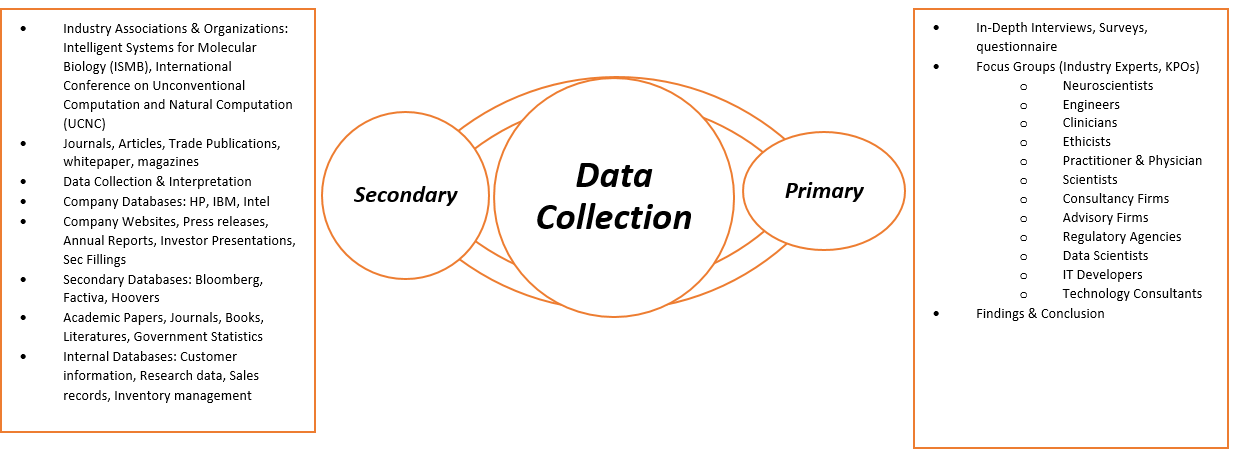
After collecting data from secondary and primary sources, we carefully examine the following to establish base numbers:

Market Sizing & Forecasting
We use bottom-up and top-down approaches to segment and estimate quantitative aspects of the market. Our research reports also present data triangulation, which examines the market from TWO different perspectives.
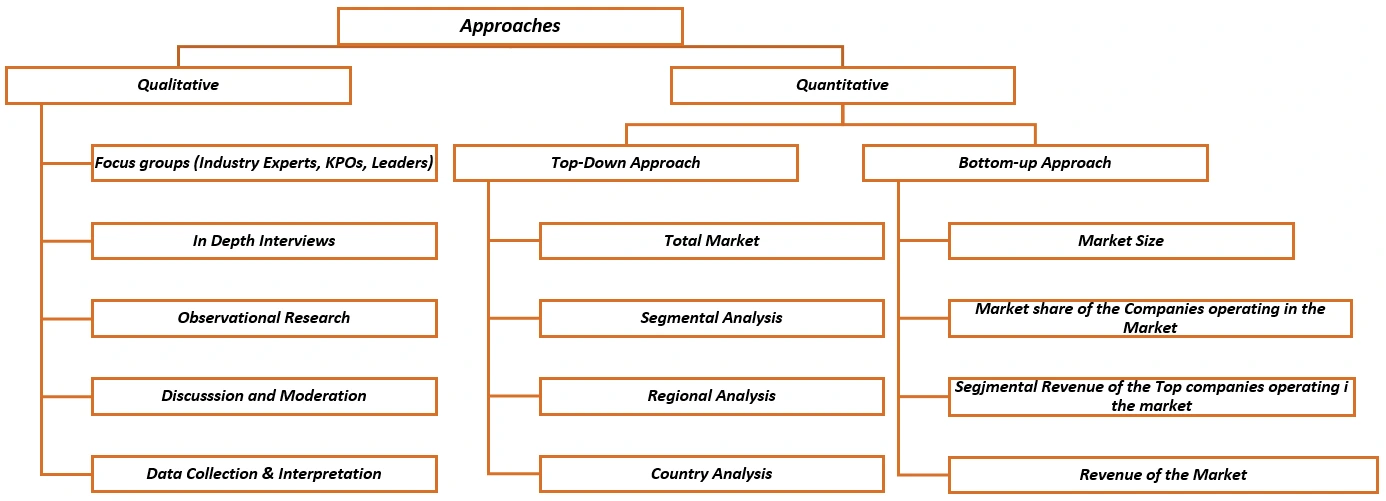
Value Chain-Based Sizing & Forecasting:

Data Validation:
- Engage with in-house market analysts and industry experts to validate all collected data and cross-check it through calls or face-to-face interviews.
- Conduct thorough quality checks to validate the data included in the report and contact various members of our network to verify the data’s authenticity, resulting in error elimination and eradication of doubtful information.
- Correlate with standard KIPs to gain insights into future trends.
- Conduct multi-tier data validation through external thought leaders, market analysts, subject matter experts, comparative analysis, and review data collection instruments.
Continuous Monitoring: Final Report and Presentation
Our team collaborates with industry experts such as Neuroscientists. Engineers, Clinicians, Ethicists to finalize and validate data. We utilize advanced data analysis models to generate valuable insights. Our integrated report comes with robust analytics and advanced visualization capabilities to ensure consistency and efficiency. We implement a standardized content management approach, common tagging, and taxonomy structure for seamless information connectivity. We offer comprehensive market and company views to facilitate easy and accurate comparisons. Our goal is to provide our clients with exceptional analytical resources for a competitive edge. We empower them to transform data into strategic insights for innovation and growth.
